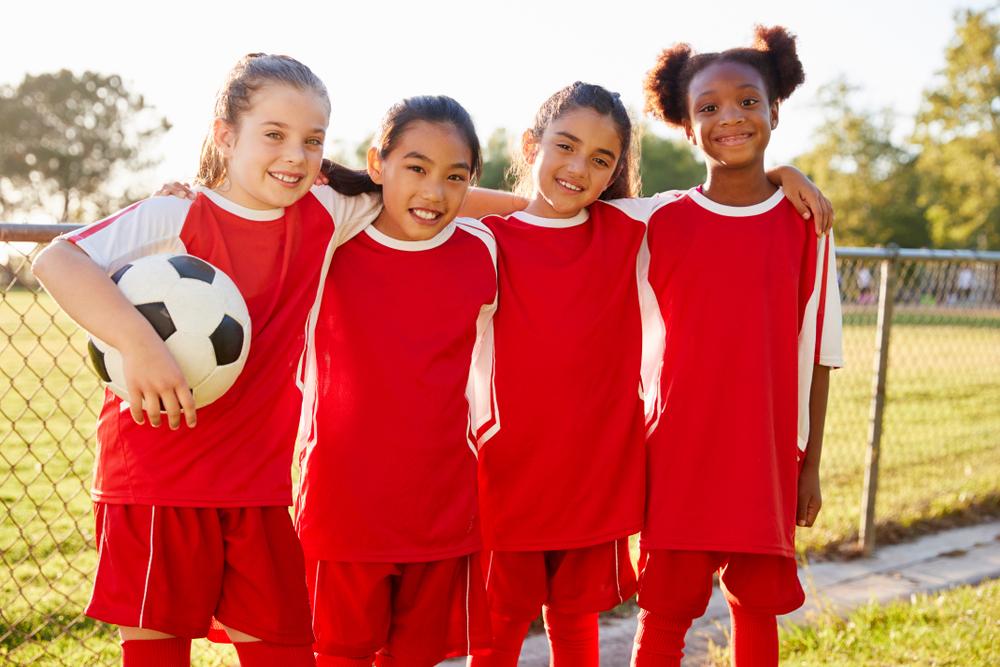Melissa Streno: We’re seeing disordered behaviors and fully clinically diagnosed eating disorders, anorexia, bulimia, binge eating, as a whole really on the rise with males. N.E.D.A., which is the National Eating Disorders Association, does a great job of keeping really updated statistics on what we’re seeing, and we know that, through them, males really represent 25 percent, so almost a quarter of all individuals who struggle with anorexia. When we think about bulimia, the prevalence rate for males is between point one to point five percent, and then between point nine and two percent for binge eating disorder. And it’s important to note that this is for those disorders that are fully diagnosed, so they clinically meet criteria. But there are many more even then we even see in those numbers.
Fortunately, more people are talking about males and eating disorders using social media, sport, any platforms really to acknowledge and convey personal struggles, and really which offers resources, support, where they can reach out when they’re feeling really alone, and I think it’s propelling more people to do so. And this is for male athletes in all levels of competition and development, really helping them to come forward, seek support. We really know that eating disorders thrive on secrecy and isolation, so this is a really big step to know that more conversations are being held, awareness is growing, in order to catch these a little bit sooner. When I say ‘these’, I mean catching sort of alarming patterns or warning signs or symptoms that we might see.
When it comes to males disclosing their struggles or asking for help, the stigma about this occurring with men can also make it a little more difficult for them to come forward. And I think that’s because it’s being talked about more, it’s decreasing a little bit.
With men, in particular, we see a higher prevalence rate in weight class sports, so this would be something like wrestling, weightlifting, and then also esthetic sports, so where there’s a focus on appearance, body building, swimming. Uniforms can also really affect that based on the appearance component and what is encouraged within that sport.
I think another risk factor, and something that’s really influential with males and their experience of struggling with or feeling challenged by eating disorders is the pressure from media, social media, peer groups, comparison, competition within their team, that are really focused on the quote, “ideal athlete.” This really can put them at a higher risk. We see male athletes report higher levels of stress, as well, when it comes to body image. I think, specifically, when we think about males and stress around body image, I think of muscle dysmorphia. Muscle dysmorphia is a psychological disorder that’s really centered around body image and that very specific, intentional drive for muscularity or building muscle, really striving to look a particular way that’s focused around muscle. So, we see a real preoccupation with that, and then this is also where the use of steroids or supplements or other things can come in and play a role. And of course, when we think about eating disorders or disordered behaviors have a really negative effect, too.
I think, first and foremost, helping the young athletes find positive role models; athletes, anyone influential within their friend or family group, school, clubs, etc., are really to use as examples of being kind, being accepting of who they are, not in comparison to others or what they’ve seen or heard they should be. I think it’s really helpful to kind of shift the athlete’s mentality to focus on their unique bodies and their minds, and really encourage them to consider what they’re able to do and what they enjoy doing, versus what they see around them being pressured to do or what they’re being encouraged to do.
I think too, as a parent or a coach or really any support person, being aware of how you talk about yourself, your body, what you eat, exercise patterns, really anything that brings focus to your physical appearance and to your body, being aware of, not only, how you’re saying that, the emotion behind it, like how you’re conveying it, how important it is to you, because young athletes really pick up on everything and it’s important to be aware of what you’re communicating, what you’re encouraging. One more piece of language is being aware of some of the words that we pick up on from influences from teen participation or from coaches, from the media, in terms of what the standard is or what the expectation is, and really helping to not use that language or to really reframe that language or think about how this might be detrimental to the young athlete if it’s something that they’re hearing on repeat that just is unrealistic or unattainable, or, most importantly, really unsafe or unhealthy.
A useful practice is being confident that when you do recognize something that feels concerning, so any sort of warning sign or behavior that just seems out of the norm, or that might lead you to think that something is going on when it comes to this young athlete’s relationship with food or exercise, is to be really open and honest with that person about your concerns and ask questions. So, instead of shaming or telling them what they’re doing is wrong, being really curious with them and really supporting them to engage in a conversation with you, so that they feel like, when they’re ready, they can ask for support. Obviously, at all, if you feel like somebody’s past the point of being able to make that decision on their own or there’s just significant denial or resistance, and there’s concerns, reach out to a professional if you suspect anything. And really know that you, also, as a parent, coach, person of support, have a support system yourself. And it’s always better to err on that side of caution.



